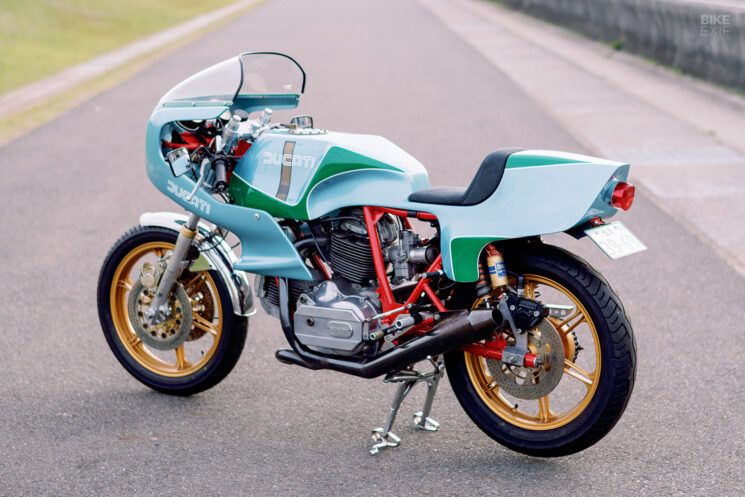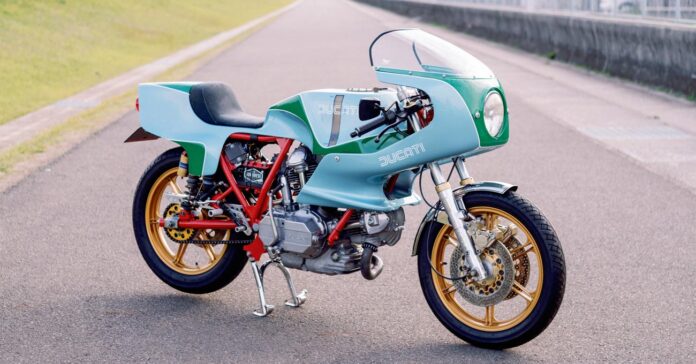In the world of vintage Ducati restomods, few names resonate as profoundly as Toshiyuki Kozaka. Operating as Switch Stance Riding from a workshop in Amakusa—a series of small islands off the coast of Kyushu, Japan—Kozaka-san has a particular affinity for bevel-driven Ducatis. More so, he has a talent for turning them into masterpieces.
Toshi’s latest restomod is not only a testament to his skill, but his supreme taste, too. It’s a 1981 Ducati 900 MHR, reimagined with personal inspiration and reverence for Italian design.
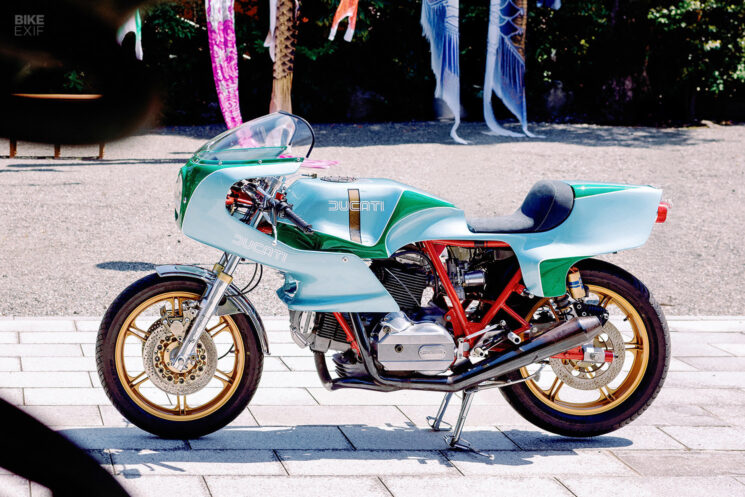
The genesis of the project traces back a few years, when Toshi spent time with a friend at Lake Garda in Italy. Riding a different 900 MHR, one that he had just fielded at the European Sultans of Sprint event, he was captivated by the shimmering water and the gradient of the sky. This vivid color palette stuck with Toshi, effectively becoming the cornerstone of his vision for this bike.
But before Toshi could execute one of the most inspired liveries we’ve ever seen, he needed a suitable bike to apply it to. So he sourced another 1981-model Ducati 900 MHR donor, and set about massaging it into a stunning restomod that, although it deviates from the original MHR formula, still feels very much like a factory Ducati.
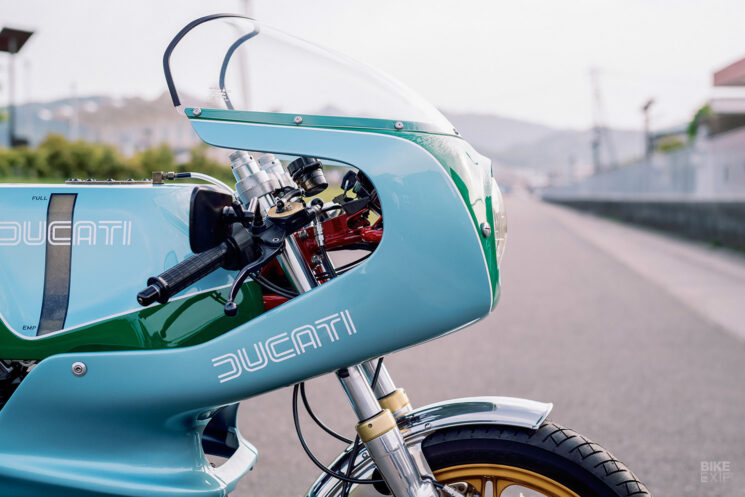
This machine’s secret sauce is the judicious mix of parts that comprise its bodywork. The front fairing is an original Ducati Mille S2 part. Toshi smoothed off its original turn signal mounting points to create a sleeker effect, before adapting it to fit the MHR.
As any Ducatista will tell you, the MHR was built as a road-going replica of the factory special Ducati 900 NCR that Mike Hailwood piloted to victory at his mythical 1978 Isle of Man comeback. Since the MHR was a production machine, it traded the NCR’s one-piece body and slim racing pad for a separate tank and tailpiece, a cushier seat, and a removable rear cowl that hid a pillion perch.
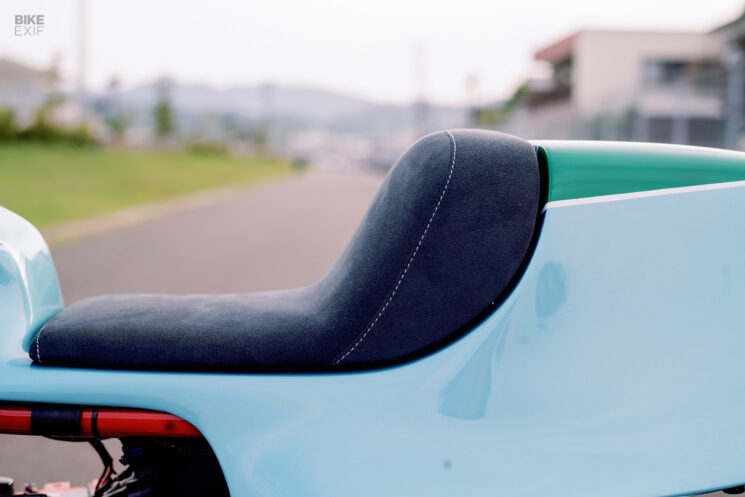
To regain some of that NCR magic, Toshi swapped the MHR’s remaining bodywork for a replica NCR monocoque. He then added a vintage gas cap, a taillight, and a license plate bracket to the mix. Mitsunaga Auto Interior Design was called in to upholster the seat in charcoal Alcantara with silver stitching.
Toshi’s work on the 900 MHR goes beyond just a cosmetic refresh. He overhauled the engine too, before treating it to a pair of 40 mm Dell’Orto carbs with velocity stacks. The wiring was refurbished and enhanced with a new AS Uotani CDI.

Toshi retained the Ducati 900 MHR’s 18” wheels and Brembo brake calipers, but added floating discs and Bridgestone BT46 tires. He ditched the OEM Marzocchi suspension, opting instead for a set of 38 mm Forcella forks and 310 mm Öhlins rear shocks. The MHR’s lanky twin exhausts have been traded for a two-into-one system that bears the patina of years of use.
Other details include rear-set foot controls from Power House MC, a new chain guard, and a chromed front fender. Tiny LED turn signals hide under the front fairing and tail cowl, offering practicality without disrupting the bike’s streamlined vibe.
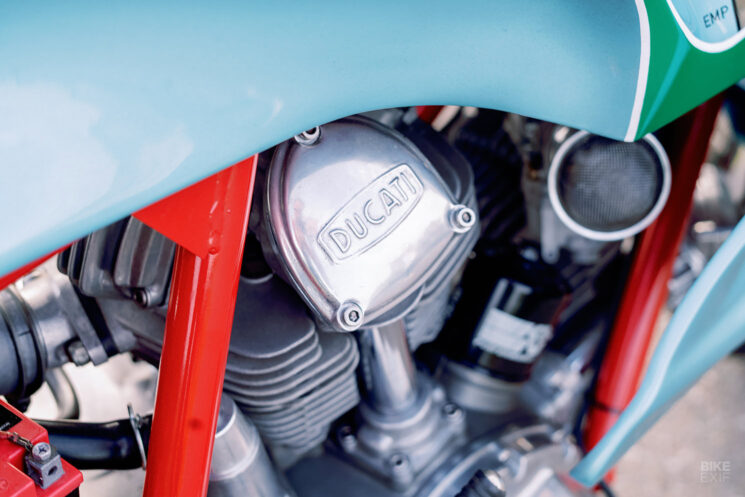
Toshi collaborated with Orvis One in Kumamoto on the Ducati’s jaw-dropping paint job. The blue hue evokes Toshi’s memories of Lake Garda, with a deep metallic finish that relishes sunlight. The green bits recall the original MHR color scheme, the hand-painted graphics are straight out of the vintage Ducati handbook, and the bright red frame and gold wheels pay homage to the marque’s racing heritage.
This pitch-perfect restomod is the perfect marriage of Toshi’s personality and Ducati’s rich lineage. It’s also one of the best treatments of the iconic Ducati 900 MHR that we’ve ever seen.
Switch Stance Riding | Facebook | Instagram | Images by, and with thanks to, Marc Holstein
